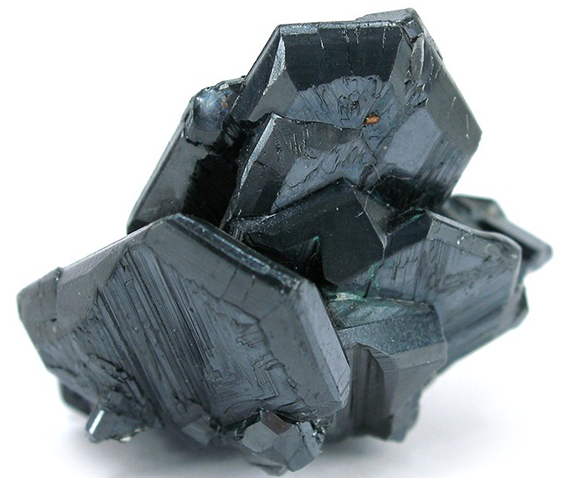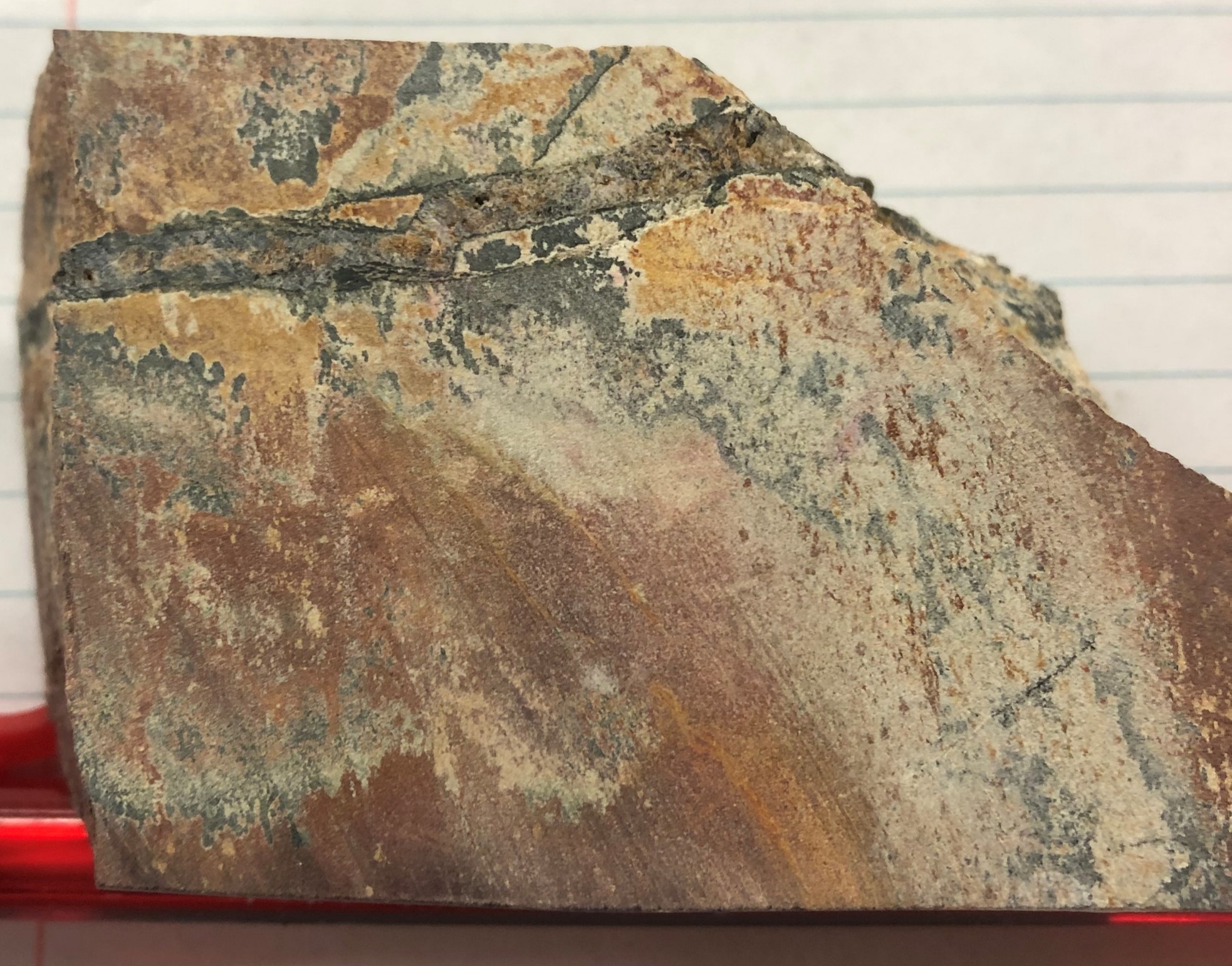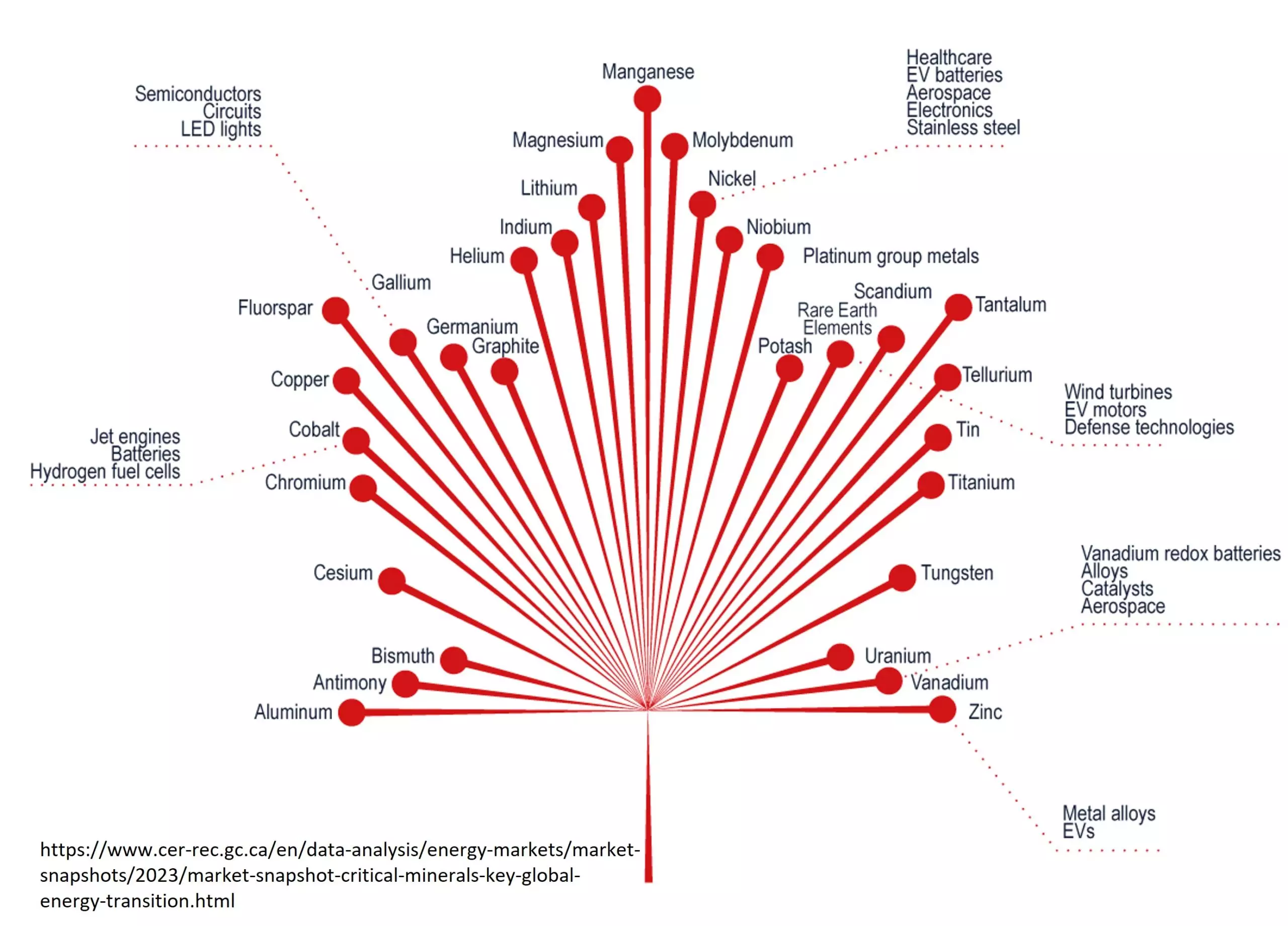Processing the mine tailings could be an easy source of cash for the company since it appears that significant gold and copper were left behind. In this case the tailings are in ponds, which is probably why no one has endeavoured to reprocess them as of yet.
[box type=”info” align=”aligncenter” ]Disclaimer: This is an editorial review of a public press release and not an endorsement. It may include opinions or points of view that may not be shared by the companies mentioned in the release. The editorial comments are highlighted so as to be easily separated from the release text and portions of the release not affecting this review may be deleted. Please view original release here.[/box]
TORONTO, ONTARIO–(Marketwired – Nov. 27, 2013) – COASTAL GOLD CORP. (TSX VENTURE:COD)(OTCQX:COGGF)(FRANKFURT:CY41) (the “Company”) reports that it has received assay results from the recently completed tailings vibracore drilling program at its 100% owned Hope Brook Gold Project in southwestern Newfoundland. Both tailings ponds 1 and 2 were tested with complete assay results shown in Table 1 and hole locations with results for gold shown in Figures 1 and 2.
[box type=”note” align=”aligncenter” ]
Before we begin, I’d like to point out that this Newfoundland company’s TSX ticker symbol is COD. If you’re not sure why that’s funny, you haven’t met a Newfoundlander.
Junior mining companies love snapping up old mine sites. They’re easy to market and have a proven track record of production. After all, it’s much easier to get investors excited about a past producer than an unknown, undeveloped land position. While one could argue that the upside is less interesting, there’s also a lower perceived risk in redeveloping a past-producer.
That’s not to say that reopening old mine sites don’t have inherent disadvantages. Old underground workings can be dangerous and difficult to navigate. The easy-to-access high grade ore is usually depleted. Old infrastructure can be costlier to clean-up than building anew. Environmental messes left behind by previous operators can be a serious liability. Still, the idea that a company will “reopen the mine” tends to get people excited.
Coastal Gold’s Hope Brook gold project is located on a the site of a gold mine that operated from 1987 to 1997. The deposit is hosted in Late Proterozoic (~575 million years old) volcanic and sedimentary rocks that have been structurally deformed and hydrothermally altered.
The deposit is fairly low grade and Coastal has set a cut-off grade of 0.5 g/t within the immediate area of the former mine workings (“constraining shell”) and 2.0 g/t outside the “shell” in defining their initial resource.
The company is currently working on defining a mineral resource estimate for the old mine tailings (waste rock). Old mines often used higher cut-off grades and tailings can sometimes hold significant grades of unprocessed ore. It is not unheard of for companies or enterprising individuals to haul away old mine tailings for processing in order to make a few bucks.
[/box]
Highlights include:
Tailings Pond 1 (all widths are true thickness)
- 1.73 g Au/t* and 0.12% copper (Cu) over 2.39 metres (m) from Hole P8
- 1.31 g Au/t and 0.18% Cu over 4.20m from Hole P13
- 1.20 g Au/t and 0.15% Cu over 3.55m from Hole P6
- 1.32 g Au/t and 0.13% Cu over 1.17m from Hole P3
- 1.22 g Au/t and 0.08% Cu over 1.21m from Hole P18
- 1.21 g Au/t and 0.06% Cu over 1.41m from Hole P28
- 1.15 g Au/t and 0.13% Cu over 4.38m from Hole P10
- 1.00 g Au/t and 0.18% Cu over 4.83m from Hole P9
Tailings Pond 2
- 1.40 g Au/t and 0.08% Cu over 3.29m from Hole P47
- 1.12 g Au/t and 0.08% Cu over 3.77m from Hole P52
- 1.08 g Au/t and 0.05% Cu over 2.73m from Hole P56
- 0.98 g Au/t and 0.11% Cu over 5.05m from Hole P64
| * grams gold per tonne |
[box type=”note” align=”aligncenter” ]
Processing the mine tailings could be an easy source of cash for the company since it appears that significant gold and copper were left behind. In this case the tailings are in ponds, which is probably why no one has endeavoured to reprocess them as of yet.
[/box]
Dr. Bill Pearson, P.Geo., President & CEO of Coastal Gold commented: “These results have confirmed the results of the initial piston core sampling program in 2012 (see news releases dated March 29, 2012 and April 24, 2012) and indicate that the tailings contain wide spread gold and copper mineralization significantly above the historic reported tailings grade. We are moving forward with a NI 43-101 mineral resource estimate for the tailings based on these new drilling results.”
Allan Polk, P.Eng., Project Manager for the Hope Brook Preliminary Economic Assessment (PEA), said: “For the purposes of the PEA, we are now considering the existing tailings material as potential mill feed to either supplement the run of mine material or to provide stand-alone early feed for the project. Both of these options have the secondary benefit of allowing an optimization of the material storage balance for the project. Some metallurgical testwork has been done to investigate the potential of recovering metals from the tailings and more has been initiated as a result of these positive tailings assay results.”
As previously reported (see press release dated October 21, 2013) a total of 73 vibracore drill holes totalling 155 metres were completed on an approximate 100-metre square grid over the two tailings ponds, designed to evaluate the full thickness of the tailings and provide sufficient data to support a NI-43-101 compliant mineral resource estimate. Fifty-one of the 73 drill holes successfully sampled tailings with a thickness ranging from 0.3 to 6.0 metres and an average thickness of 3.0 metres. The remainder of the holes (22) encountered bedrock in areas where the tailings ponds where not filled. The previous shallow piston core sampling program indicated that the tailings contain an average grade of approximately 1.0 g Au/t (see news releases dated March 29, 2012 and April 24, 2012).
Drill holes from Tailings Pond 1 are generally higher grade. This is likely because most of the tailings in Pond 1 are reported to be from the earlier years of production when the historic mill lacked a copper flotation circuit for production of a copper concentrate hence had lower reported overall recovery. Most of the tailings in Pond 2 are reported to have been from the latter years of production when the plant recovery was higher due to the addition of the copper flotation circuit.
Tailings Pond 1
Tailings material with an average thickness of 3.12 metres was recovered from 25 of a total 29 vibracore drill holes at Tailings Pond 1. Assay results from the drill holes range from 0.57 g Au/t and 0.08 % Cu over a true thickness of 3.84 metres (hole P21) up to 1.73 g Au/t and 0.12% Cu over a true thickness of 2.39 metres (hole P8).
Tailings Pond 2
Tailings material with an average thickness of 2.94 metres was recovered from 26 of a total 44 vibracore drill holes at Tailings Pond 2. Assay results from the drill holes range from 0.44 g Au/t and 0.12% Cu over a true thickness of 3.33 metres (hole P73) up to 1.40 g Au/t and 0.08% Cu over a true thickness of 3.29 metres (hole P47). Drilling confirmed that the eastern half of this tailings pond has essentially no tailings.
[box type=”note” align=”aligncenter” ]
Since the tailing consist of consolidated (loose) rock, the vibracore drill is used to retrieve representative results from within the tailings. Vibracore is exactly what is sounds like: A 4-inch vibrating tube designed to shake its way into and retrieve samples from loose sediment.
[/box]
| Table 1: Summary of Assay Results for Vibracore Drilling Program, Hope Brook | |||||
| Drill hole | Easting | Northing | Au g/t | Cu % | Width (m) |
| Tailings Pond 1 | |||||
| P1 | 418615 | 5286965 | 0.77 | 0.10% | 3.42 |
| P2 | 418671 | 5286949 | 0.78 | 0.10% | 4.19 |
| P3 | 418815 | 5286739 | 1.32 | 0.13% | 1.17 |
| P4 | 418859 | 5286672 | 1.04 | 0.12% | 2.23 |
| P5 | 418894 | 5286593 | 0.61 | 0.10% | 3.93 |
| P6 | 418602 | 5286872 | 1.20 | 0.15% | 3.55 |
| P7 | 418657 | 5286787 | 0.73 | 0.17% | 4.18 |
| P8 | 418769 | 5286625 | 1.73 | 0.12% | 2.39 |
| P9 | 418541 | 5286786 | 1.00 | 0.18% | 4.83 |
| P10 | 418589 | 5286707 | 1.15 | 0.13% | 4.38 |
| P11 | 418657 | 5286621 | 0.97 | 0.14% | 3.25 |
| P12 | 418711 | 5286534 | 0.75 | 0.08% | 0.66 |
| P13 | 418765 | 5286457 | 1.31 | 0.18% | 4.20 |
| P14 | 418501 | 5286654 | 0.99 | 0.18% | 3.07 |
| P15 | 418559 | 5286574 | 0.71 | 0.08% | 0.92 |
| P16 | 418616 | 5286492 | no sample* | ||
| P17 | 418676 | 5286414 | 0.93 | 0.09% | 3.76 |
| P18 | 418446 | 5286552 | 1.22 | 0.08% | 1.21 |
| P19 | 418501 | 5286479 | no sample* | ||
| P20 | 418562 | 5286403 | 0.79 | 0.08% | 1.33 |
| P21 | 418615 | 5286320 | 0.57 | 0.08% | 3.84 |
| P22 | 418391 | 5286465 | 1.28 | 0.07% | 1.81 |
| P23 | 418451 | 5286381 | no sample* | ||
| P24 | 418505 | 5286304 | 0.81 | 0.06% | 5.14 |
| P25 | 418337 | 5286411 | no sample* | ||
| P26 | 418431 | 5286302 | 0.85 | 0.07% | 5.97 |
| P27 | 418431 | 5286235 | 0.57 | 0.09% | 2.31 |
| P28 | 418269 | 5286342 | 1.21 | 0.06% | 1.41 |
| P29 | 418331 | 5286287 | 0.65 | 0.08% | 4.87 |
| Tailings Pond 2 | |||||
| P30 | 419951 | 5285410 | no sample* | ||
| P31 | 419778 | 5285520 | no sample* | ||
| P32 | 419844 | 5285438 | no sample* | ||
| P33 | 419661 | 5285530 | no sample* | ||
| P34 | 419710 | 5285449 | no sample* | ||
| P35 | 419464 | 5285601 | no sample* | ||
| P36 | 419538 | 5285532 | no sample* | ||
| P37 | 419585 | 5285457 | no sample* | ||
| P38 | 419450 | 5285475 | no sample* | ||
| P39 | 419494 | 5285421 | 0.80 | 0.14% | 0.56 |
| P40 | 419552 | 5285339 | no sample* | ||
| P41 | 419392 | 5285542 | no sample* | ||
| P42 | 419248 | 5285541 | 0.97 | 0.07%` | 1.90 |
| P43 | 419329 | 5285487 | no sample* | ||
| P44 | 419386 | 5285406 | no sample* | ||
| P45 | 419443 | 5285320 | no sample* | ||
| P46 | 419499 | 5285237 | no sample* | ||
| P47 | 419172 | 5285572 | 1.40 | 0.08% | 3.29 |
| P48 | 419161 | 5285491 | 0.77 | 0.08% | 4.53 |
| P49 | 419252 | 5285419 | 0.76 | 0.09% | 0.62 |
| P50 | 419368 | 5285249 | no sample* | ||
| P51 | 419424 | 5285173 | no sample* | ||
| P52 | 419116 | 5285430 | 1.12 | 0.08% | 3.77 |
| P53 | 419190 | 5285333 | 0.63 | 0.09% | 3.40 |
| P54 | 419304 | 5285174 | 0.63 | 0.07% | 1.61 |
| P55 | 419350 | 5285118 | 0.49 | 0.10% | 3.26 |
| P56 | 419067 | 5285347 | 1.08 | 0.05% | 2.73 |
| P57 | 419126 | 5285246 | 0.68 | 0.06% | 4.60 |
| P58 | 419186 | 5285166 | 0.64 | 0.09% | 1.28 |
| P59 | 419245 | 5285081 | 0.62 | 0.07% | 3.81 |
| P60 | 419301 | 5285000 | 0.64 | 0.08% | 2.70 |
| P61 | 418995 | 5285266 | 0.81 | 0.04% | 3.40 |
| P62 | 419049 | 5285182 | 0.92 | 0.06% | 1.09 |
| P63 | 419110 | 5285101 | 0.81 | 0.04% | 2.26 |
| P64 | 419166 | 5285018 | 0.98 | 0.11% | 5.05 |
| P65 | 419226 | 5284940 | no sample* | ||
| P66 | 419012 | 5285067 | 0.67 | 0.05% | 3.60 |
| P67 | 419072 | 5284984 | 0.61 | 0.04% | 2.87 |
| P68 | 419128 | 5284925 | 0.54 | 0.13% | 3.12 |
| P69 | 419187 | 5284821 | 0.69 | 0.08% | 3.61 |
| P70 | 418958 | 5285001 | 0.61 | 0.05% | 3.34 |
| P71 | 419035 | 5284896 | 0.71 | 0.08% | 1.50 |
| P72 | 419108 | 5284829 | 0.69 | 0.09% | 5.32 |
| P73 | 419168 | 5284732 | 0.44 | 0.12% | 3.33 |
| Au = gold; Cu = copper; Width = true thickness; g/t = grams per tonne; %percent |
| *no sample. Hole for which “no sample” is reported were drill locations where no or very little tailings were present and no sample could be recovered. |
[box type=”note” align=”aligncenter” ]
It looks like the second pond doesn’t have much to offer, and the company has said as much. However, it still may have some recoverable ore and dredging or draining the two ponds may ultimately be necessary anyway.
[/box]
ABOUT COASTAL GOLD
Coastal Gold is a Canadian mineral exploration company listed on the TSX Venture Exchange under the symbol “COD”. Coastal Gold’s flag ship property is the Hope Brook Gold Project located in southwestern Newfoundland, which has 12.4 million tonnes at 1.48 g Au/t for 590,000 ounces of indicated mineral resources and 8.2 million tonnes at 2.07 g Au/t for 548,000 ounces of inferred mineral resources (see technical report entitled “Updated Mineral Resource Estimate Technical Report, Hope Brook Gold Project, Newfoundland and Labrador, Canada”, effective October 1, 2012). Coastal Gold is currently completing an updated mineral resource estimate which will form the basis for a Preliminary Economic Assessment (PEA) which is also in progress.
SAMPLING, ASSAYING AND QUALITY CONTROL
The vibracore drilling program is a low impact coring method that allows for recovery of unconsolidated sediments using a four inch diameter aluminum core tube. The tailings core were logged, photographed and then split in half with one-half sent to the laboratory for analysis and the other half retained and stored on site. All core samples were prepared and assayed at ALS Minerals, with sample preparation done in Sudbury and analytical work done in North Vancouver. All locations of ALS Minerals are ISO 9001:2000 certified. The entire sample received was dried, weighed and crushed to = 70% passing 1mm. A sample split of up to 1000g is then pulverized to = 85% passing 75 microns (200 mesh) to produce a homogenized sample. A 50g aliquot is used for fire assaying with an atomic absorption (AA) finish to determine gold concentration. Copper was analyzed using a four acid digestion ICP (inductively coupled plasma-atomic emission spectrometry) method. Internal quality control includes the use of blanks, duplicates and standards in every batch of samples. The Company also conducts internal check assaying using certified external reference standards and blanks. Regular external check assays are performed at a second certified Canadian commercial laboratory. Coastal Gold also inserts external reference standards as a further external check.
[box type=”note” align=”aligncenter” ]
QA/QC can be a little difficult when dealing with old tailings. Often a team will be sent to pick through a rock pile “at random”, but random can be a little tricky. The eye is always drawn to the more interesting rocks and depending on the size, a random sample does not always translate into representative sample. In this case it is a little easier since the company is drilling into the tailings, but dividing the samples into representative halves for assay still requires some objectivity.
[/box]
QUALIFIED PERSONS
Dr. John Gale, P.Eng., President of Fracflow Consultants Inc., supervised the vibracore drilling program. Dr. Gale is an independent qualified person as defined by NI 43-101. David Copeland, P.Geo., Chief Geologist, and Dr. Bill Pearson, P.Geo., President & CEO of Coastal Gold, both qualified persons as defined by NI 43-101, have reviewed and approved the scientific and technical content of this news release.
[box type=”success” align=”aligncenter” ]Have a company or release you’d like us to look at? Let us know though our contact page, through Google+, Twitter or Facebook.[/box]






